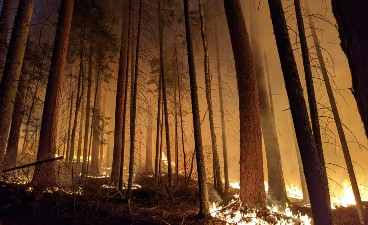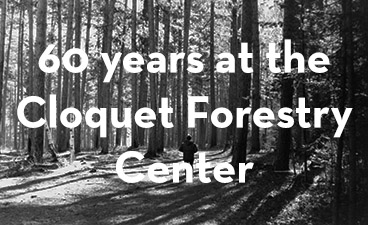Stories
People, Fire and Pines: How Fire Use by the Anishinaabeg Shaped the Boundary Waters
In this piece, Clare Boerigter explores the false-yet-still-dominant narrative of the Boundary Waters Canoe Area Wilderness as a wilderness “untrammeled by man,” drawing on the work and knowledge of a range of Ojibwe and non-Ojibwe experts to understand the influence of the Anishinaabeg on the forests of the Boundary Waters. The relationship between the Anishinaabeg and fire is a central part of this story. Today, however, fires historically lit by the Anishinaabeg have been removed from the Boundary Waters. When lightning fires do occur on this landscape (as they did during the summer of 2021), state and federal agencies work hard to suppress them. Ecologically, spiritually and relationally, this absence of fire has been felt across the forests of Boundary Waters. In speaking with a range of folks, including Lane Johnson (CFC Research Forester) and others with ties to the University of Minnesota, Clare investigates the questions: Are there ways to live with fire, instead of suppressing it? In what ways, by attempting to live without fire, have we harmfully impacted both land and people? And what can the Boundary Waters – a wilderness frequently defined as free of human influence – teach us about the relationships between people and fire? To explore these questions with Clare go to: z.umn.edu/PeopleFirePine.
60 Years at the Cloquet Forestry Center
In a collection of six multimedia Storymaps titled “60 Years at the Cloquet Forestry Center,” Clare Boerigter tells stories of the CFC’s work, people and life from 1960 to 2020. In the collection, Boerigter explores the pioneering work of scientists Isabel Ahlgren (HWRC) and Gordy Gullion (CFC), highlights the CFC field sessions, which have educated University of Minnesota forestry students for the past 96 years, and dives into Conservation Education Days, a hands-on learning program which has introduced Carlton County 5th graders to forestry since 1968. To tell these stories, Boerigter interviewed over 40 foresters, land managers, professors, students and Cloquet-area community members, including members of the Fond du Lac Band, on whose reservation the CFC resides. Throughout the collection, audio clips and historical and contemporary photos are integrated into the narratives to help tell these dynamic stories. The collection ends by looking to the future and asking CFC staff and Fond du Lac Band members to envision what changes the coming years will bring to the Cloquet Forestry Center.
News

Legacy Q&A with Andy David
Join us in congratulating Andy David, current Director of Operations for the Cloquet Forestry Center and Hubachek Wilderness Research Center, on his upcoming retirement. Read more to find out what Andy is looking forward to in his retirement, and the things he will miss most from his time with the U of M.
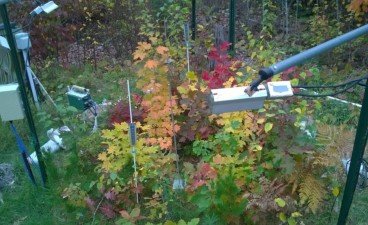
Even modest warming could cause major changes for forests in the Great Lakes region and southern Canada
Even relatively modest climate change could dramatically alter Minnesota’s Northwoods and the southern boreal forest that runs from eastern Canada to Alaska, according to a rare long-term experiment by a team of researchers led by U of M professor Peter Reich.
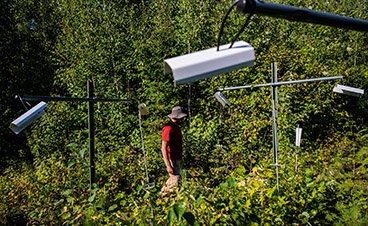
In fast-warming Minnesota, scientists are trying to plant the forests of the future
This interactive Washington Post article about climate change and forest research in northern Minnesota highlights the B4WarmED research project taking place at the CFC and HWRC.
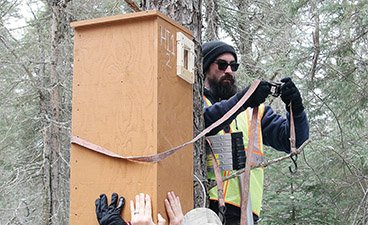
A future for fisher?
Wildlife researchers are hoping that a project will better determine if the use of artificial nest boxes may be one way to help recover Minnesota’s fisher population, which has declined sharply in recent years. Read more about this research project that the HWRC is one of the host sites for.

